Harihar Fort: Best for History, Trekking Adventure, & Spiritual Significance
- Location: Nashik
- Timings: Sunrise to sunset
- Categories: Forts, Tourist Places
- Tags: Adventure Trek, Best forts in Maharashtra, Harihar Fort, Harihar Fort history, Harihar Fort trek, Sahyadri trekking
- Location Taxonomy: India, Maharashtra, Nashik
India’s forts are not just stone structures—they are living chronicles of history, bravery, and culture. Among Maharashtra’s many hill forts, Harihar Fort stands out as one of the most unique and thrilling destinations. Known for its near‑vertical rock‑cut steps, panoramic views, and spiritual heritage, Harihar Fort is a favorite among trekkers, history buffs, and pilgrims alike.
Located in the Nashik district, near Igatpuri and Trimbakeshwar, Harihar Fort is perched at an altitude of about 3,676 feet (1,121 meters). Built during the Yadava dynasty and later controlled by the Marathas, this fort has witnessed centuries of strategic importance. Today, it is one of Maharashtra’s most adventurous trekking spots and a must‑visit heritage site.
This article explores the history, architecture, trekking experience, nearby attractions, and FAQs about Harihar Fort, making it a complete guide for travelers.
Historical Background of Harihar Fort
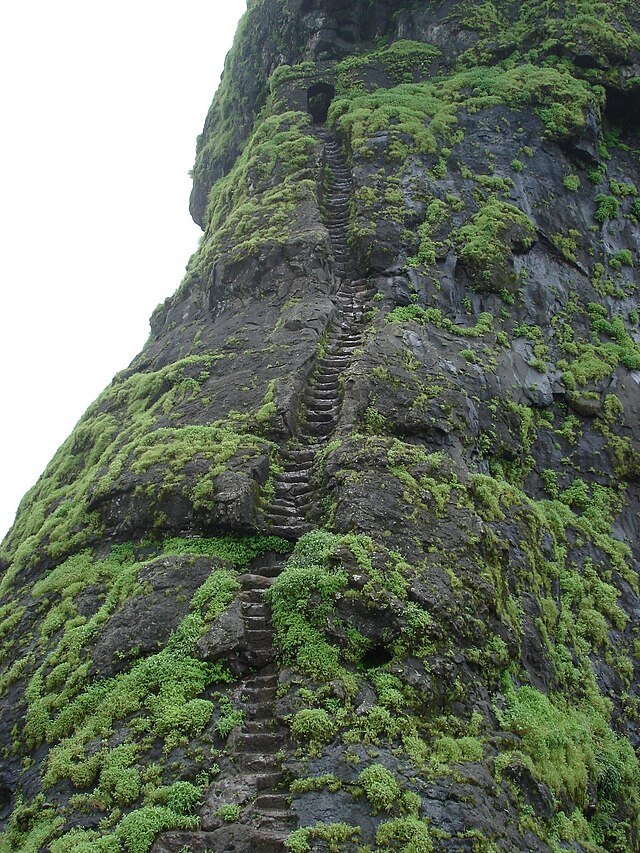
- Era: Believed to have been built during the Yadava dynasty (9th–14th century).
- Strategic Purpose: Constructed to guard the trade route connecting Maharashtra’s Konkan region with Gujarat.
- Maratha Rule: Later came under the control of the Marathas, who used it as a watch fort.
- British Capture: Eventually captured by the British in the 19th century.
The fort’s location on a triangular hill made it a natural defense point, while its steep rock‑cut steps made it nearly impregnable.
Architectural Features of Harihar Fort
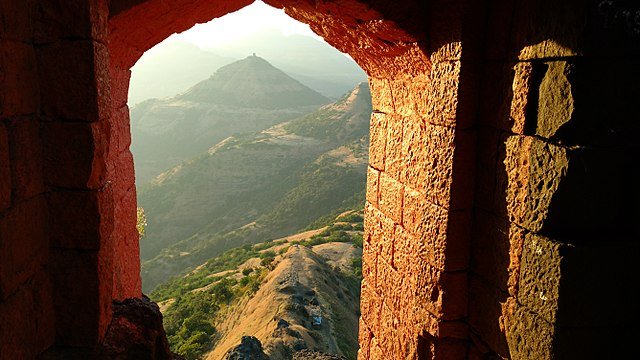
Harihar Fort is famous for its distinctive architecture, especially its vertical staircase.
Key Features:
- Rock‑Cut Steps: Nearly 80 steep steps carved at a 70–80° angle, resembling a wall climb.
- Triangular Hilltop: The fort is built on a triangular prism‑shaped hill, giving it a unique silhouette.
- Watchtowers and Bastions: Used for surveillance of surrounding trade routes.
- Water Cisterns: Rock‑cut water tanks that provided drinking water to soldiers.
- Temples: Small shrines dedicated to Lord Hanuman and Lord Shiva.
The fort’s design reflects both military strategy and spiritual devotion.
Trekking Experience at Harihar Fort
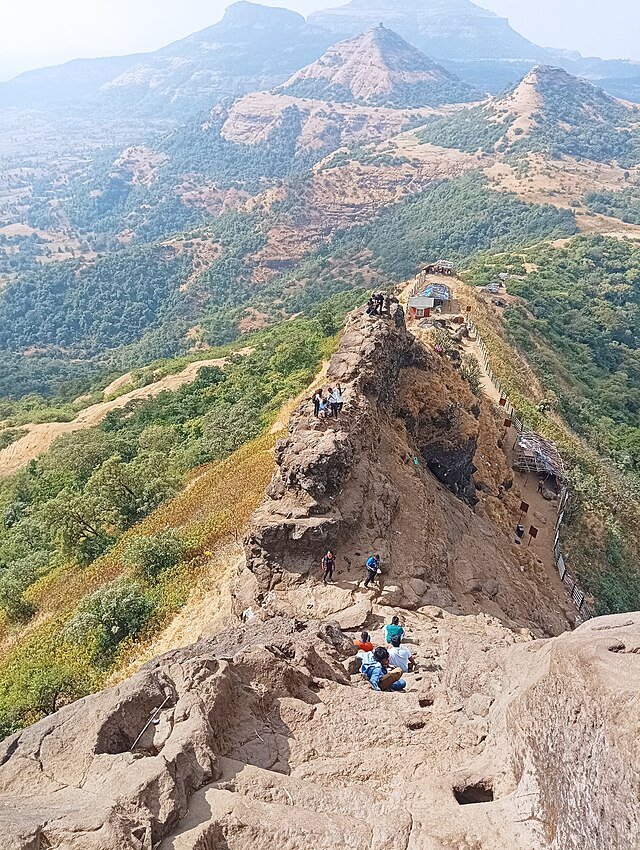
For adventure seekers, trekking to Harihar Fort is an unforgettable experience.
Trekking Route:
- Base Villages: Nirgudpada and Harshewadi.
- Duration: 2–3 hours to ascend, 1.5–2 hours to descend.
- Difficulty Level: Moderate to challenging, due to the vertical staircase.
- Best Season: Monsoon (July–September) for lush greenery, and winter (October–February) for clear skies.
Highlights of the Trek:
- Vertical Staircase: The most thrilling part of the trek, where climbers ascend almost vertically.
- Panoramic Views: Sahyadri ranges, Vaitarna dam, and Trimbakeshwar hills.
- Spiritual Shrines: Small temples at the top, offering a peaceful retreat.
- Adventure Photography: The staircase and summit views are Instagram favorites.
Spiritual and Cultural Significance
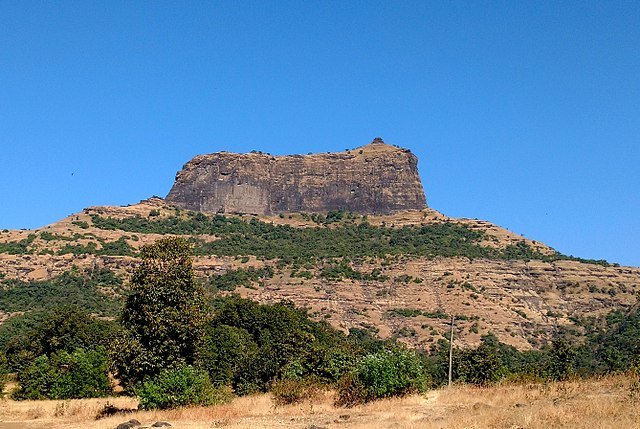
- Lord Hanuman Temple: A small shrine dedicated to Hanuman, symbolizing strength and protection.
- Lord Shiva Temple: Pilgrims visit the temple during festivals and special occasions.
- Trimbakeshwar Connection: Located near the famous Trimbakeshwar Jyotirlinga, enhancing its spiritual aura.
Thus, Harihar Fort is not just an adventure trek but also a spiritual journey.
Location and Accessibility
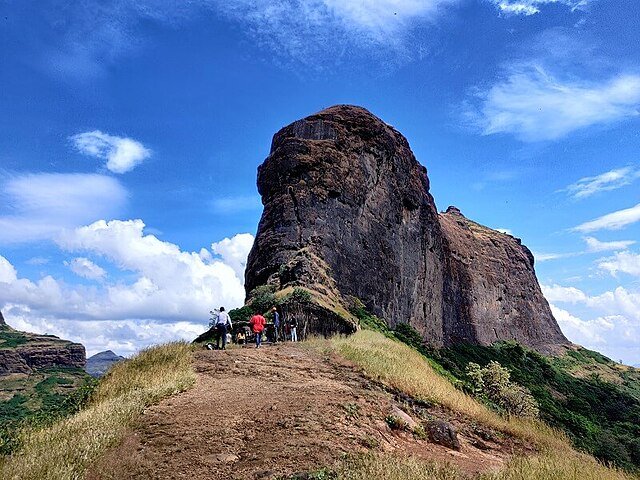
- District: Nashik, Maharashtra
- Altitude: 3,676 feet (1,121 meters)
- Nearest Towns: Igatpuri (40 km), Nashik (40 km), Trimbakeshwar (13 km)
- Nearest Railway Station: Igatpuri Railway Station
- Nearest Airport: Nashik Airport (50 km), Mumbai Airport (180 km)
How to Reach:
- From Mumbai: 180 km (approx. 4–5 hours by road).
- From Pune: 250 km (approx. 5–6 hours by road).
- From Nashik: 40 km (approx. 1.5 hours by road).
Best Time to Visit Harihar Fort
- Monsoon (July–September): Waterfalls, greenery, and misty views.
- Winter (October–February): Clear skies, pleasant weather, and safe trekking conditions.
- Avoid Summer (March–June): Hot and dry, making the trek uncomfortable.
Entry Fees and Timings
- Entry Fee: Free (no charges for trekking).
- Timings: Open all year round; best to trek between sunrise and sunset.
- Guides: Local guides available at base villages.
Things to See at Harihar Fort
- Vertical Rock‑Cut Steps – The highlight of the trek.
- Hanuman Temple – A small shrine at the top.
- Shiva Temple – A spiritual retreat for pilgrims.
- Water Cisterns – Ancient rock‑cut tanks.
- Watchtowers – Offering panoramic views of Sahyadris.
- Sunrise and Sunset Views – Breathtaking photography opportunities.
Nearest Tourist Places
- Trimbakeshwar Jyotirlinga (13 km): One of the 12 Jyotirlingas of Lord Shiva.
- Anjaneri Fort (20 km): Believed to be the birthplace of Lord Hanuman.
- Igatpuri (40 km): Famous for Vipassana International Academy.
- Nashik City (40 km): Known for Kumbh Mela and vineyards.
- Vaitarna Dam (30 km): Scenic reservoir with boating options.
Travel Tips for Visitors
- Wear trekking shoes with good grip.
- Carry water, snacks, and a first‑aid kit.
- Avoid trekking during heavy rains due to slippery steps.
- Start early in the morning to avoid crowds.
- Respect local traditions and avoid littering.
❓ FAQs about Harihar Fort
Q1: Why is Harihar Fort famous?
A: Harihar Fort is famous for its vertical rock‑cut steps, triangular hilltop, and panoramic views.
Q2: How difficult is the Harihar Fort trek?
A: The trek is moderate to challenging due to the steep staircase, but manageable with caution.
Q3: What is the best time to visit Harihar Fort?
A: Monsoon and winter are the best seasons for trekking.
Q4: How far is Harihar Fort from Nashik?
A: About 40 km, roughly 1.5 hours by road.
Q5: Are there temples at Harihar Fort?
A: Yes, small shrines dedicated to Lord Hanuman and Lord Shiva are located at the top.
Conclusion
Harihar Fort is a rare blend of history, adventure, and spirituality. Its vertical staircase challenges trekkers, its temples inspire pilgrims, and its panoramic views captivate travelers. Whether you are an adventure enthusiast, a history lover, or a spiritual seeker, a visit to Harihar Fort promises an unforgettable experience in the heart of the Sahyadris.
